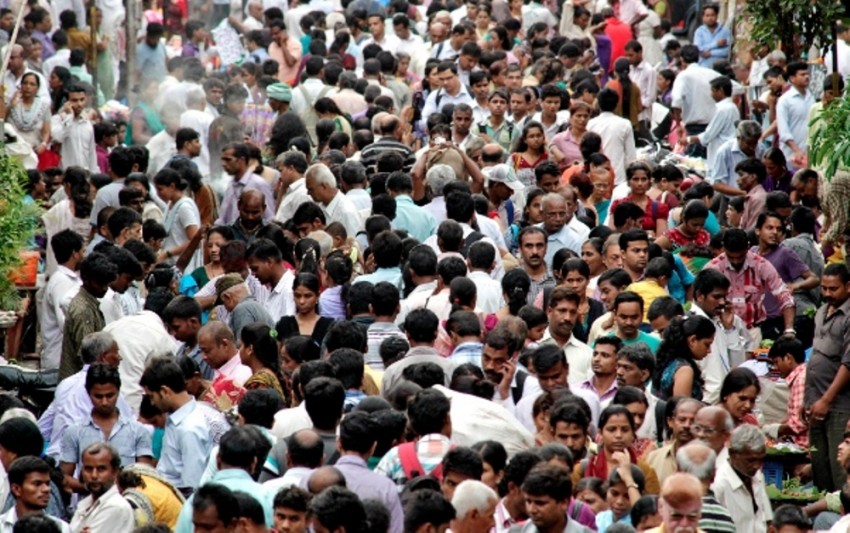How India takes minimal pride in becoming the world’s most populous country
Some time in April this year India will become the world’s most populous country according to the United Nations population forecasts. By some calculations, such as those of the World Population Review and Macrotrends, that transition has already occurred and there are already about five million more Indians than Chinese. Either way, now or in a few months’ time India passes the 1.46 billion people mark and becomes the most populous country in the world.

While this has received considerable media attention, it is not something New Delhi has made much of a noise about. The Indian government’s official population numbers are still based on the 2011 census as the next census was postponed because of the Covid pandemic. More to the point, having spent much of the past half-century trying to control population growth the government is not inclined to see this as a positive accomplishment.
It is fair to say this could offer India a “demographic dividend,” especially at a time when much of the developed and middle-income world has begun to age rapidly. On paper this is true. Measured as a percentage of its working age population (between 20 and 59 years old) India has passed the halfway mark in 2010 and will keep rising until 2041 when this percentage will peak at about 64%. Roughly one-fifth of new entrants into the world’s labour markets will be Indian during this time.
But in a modern economy, quality is as important as quantity. The challenge for India is that this huge incoming wave of youth will only generate a dividend if they are suitably skilled and gainfully employed. Already, with 12 million new jobs required every year and despite one of the fastest economic growth rates in the world, India is struggling to set up enough schools and colleges for so many. While basic literacy rates are reasonably high at about 75% and the numbers even higher among youth, skilling levels remain a weakness. The India Skills Report 2023 says only about 50.3% of the working population is presently employable.
Unsurprisingly, India is scrambling to keep pace with the youth bulge. The government recently announced a new National Education Policy designed to attract private investment and collaboration in higher education. Skilling and training programs have been signed with a half-dozen countries to prepare workers for new economic sectors, the most recently with Taiwan to train Indian technicians in the fine art of semiconductor manufacturing. But given the sheer numbers involved and the limited capacity of the Indian state, much of this will barely scratch the surface of what is needed. Indians under 25 years old today number a staggering 700 million. In comparison, the World Bank has calculated world’s entire college student enrolment today is about 220 million. Unsurprisingly Indian youth are looking for alternative solutions, most notably online educational solutions.
Another element of India’s population growth is that it is regionally skewed. The populations of the wealthier and better educated southern Indian states have been below replacement levels since at least the Census of 2011. Even western and eastern India has seen growth rates largely plateau. This means it is the northern and central Indian states which will disproportionately contribute to the labour force over the coming decades despite being the states with the worst human development indices and thus the least employable workers in the country. It does not help that these regions are also ethnically different from each other. There are already concerns in south India that the fallout of the demographic dividend will spell their political marginalization and the transfer of wealth to the north. To put this in perspective, in terms of income and social capital the disparity between the poor north and well-off south is about the same as that between Africa and Europe.
In any case, there will be global spillover in the form of a surge in Indian emigration overseas. India has traditionally not been a large source of emigrants. For much of its independent history, net migration, measured as emigrants out of 100,000 people, never went beyond seven. From the 2000s onwards, this has grown to over 26 and continues to rise. The Indian diaspora has nearly tripled between 1990 and 2020, going from 6.6 million to nearly 18 million. This is in large part because of sheer numbers and the size of its youthful bulge. But it also reflects the positive image Indian migrants have earned for themselves in certain countries, notably the United States, for technological skills and entrepreneurship.
If India were able to empower even a sizeable portion of its population, the results would be transformational economically. India could aspire to come close to the mediaeval days when it constituted about 25% of the world’s wealth, and become a close competitor to modern China in terms of growth trajectories. If it fails to invest in its population, it could emerge a more populous version of Mexico or the Philippines, stuck in a middle class trap with a low productivity workforce and mediocre per capita income growth.
The Narendra Modi government has not wavered from the policies of population control followed by previous regimes. Partly colored by its supporters’ concerns about the supposedly larger family sizes of religious minorities it has occasionally talked about imposing stringent population control methods. Some state government continue to restrict welfare benefits and administrative benefits for families with over two children. However, this is largely a discussion very much out of touch with India’s population reality.
Read also:
Nationalism with Indian characteristics: the politics of a cultural revival
China, climate and convergence: the new India-US relationship
India and China: the uneasy partnership between the Asian giants
